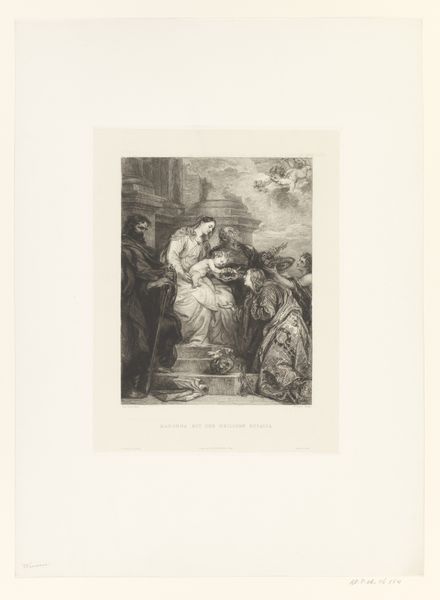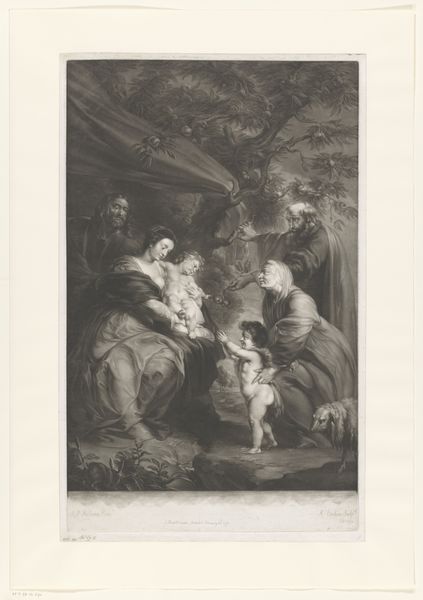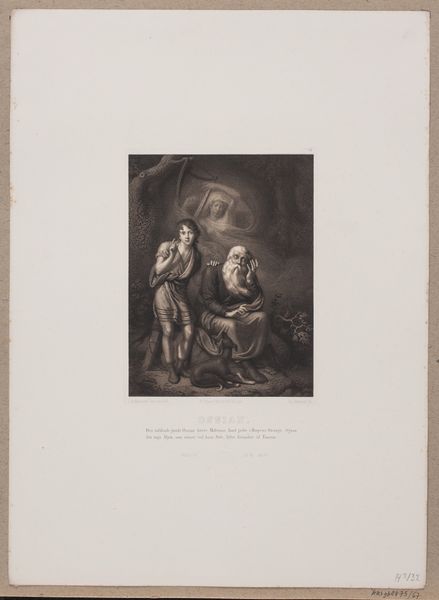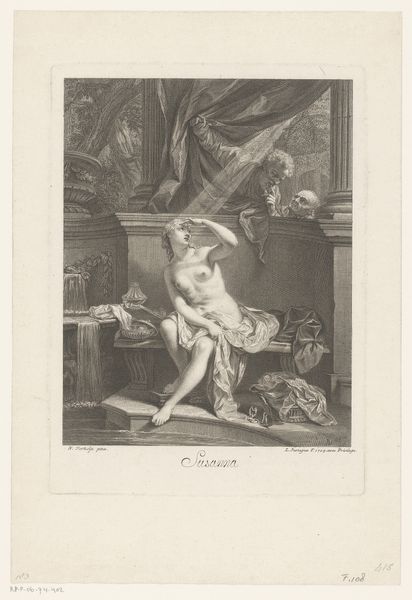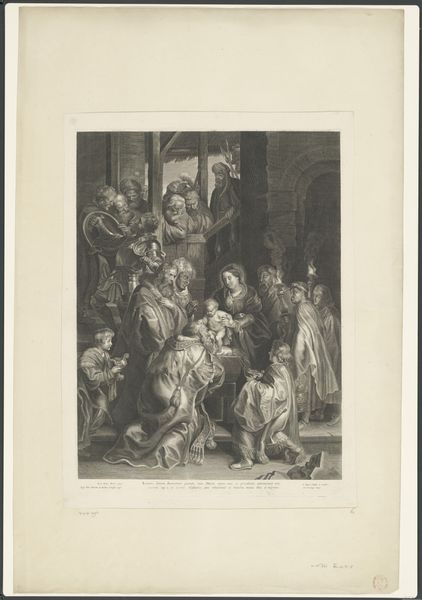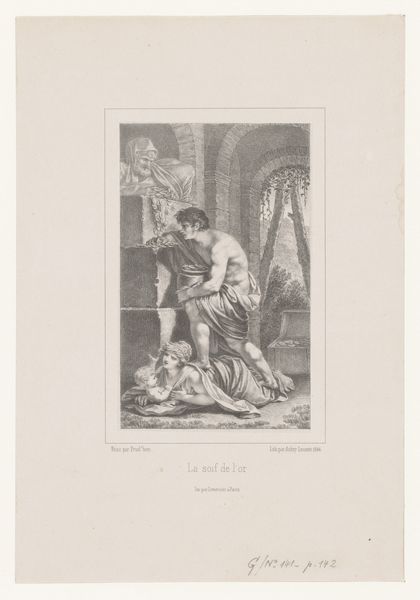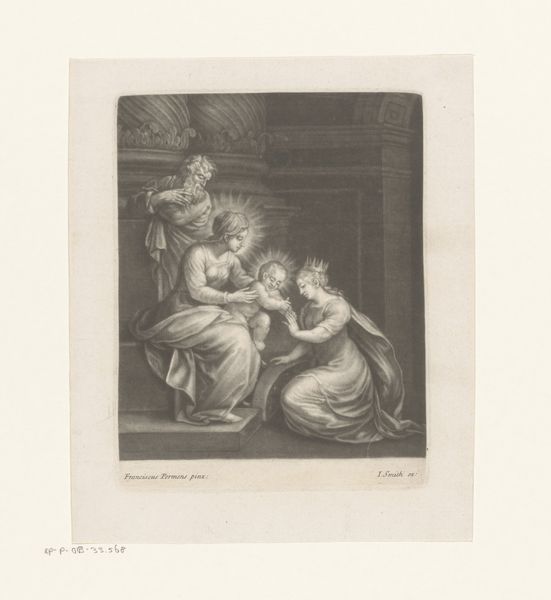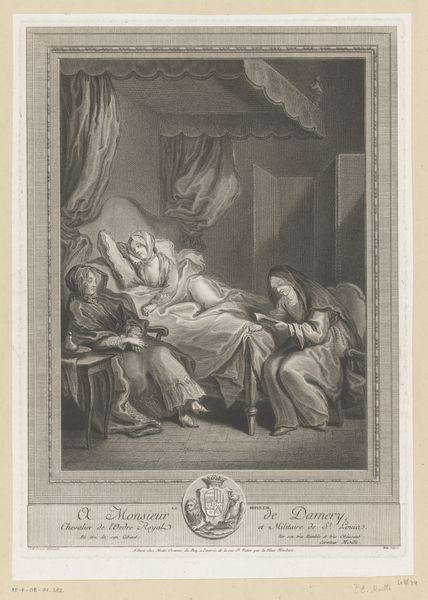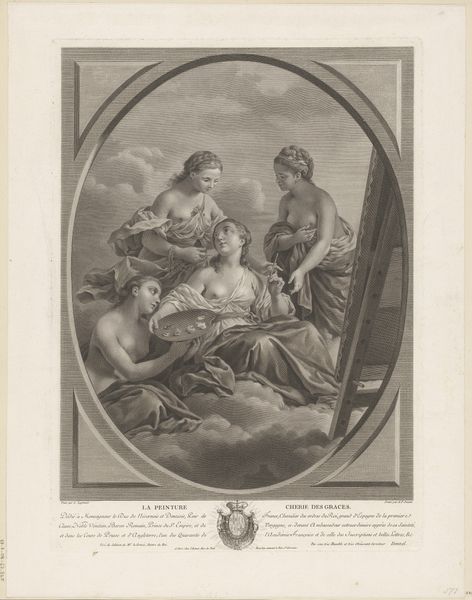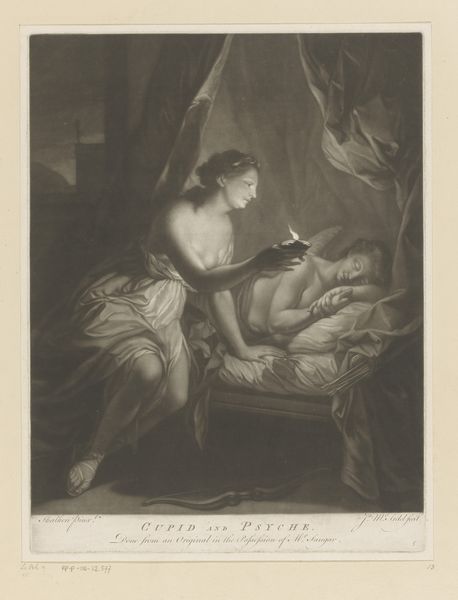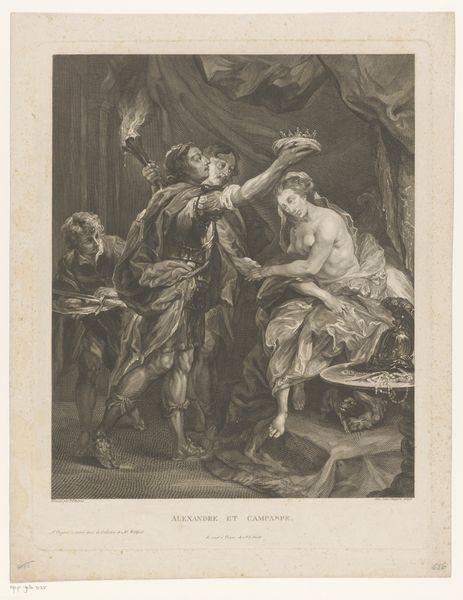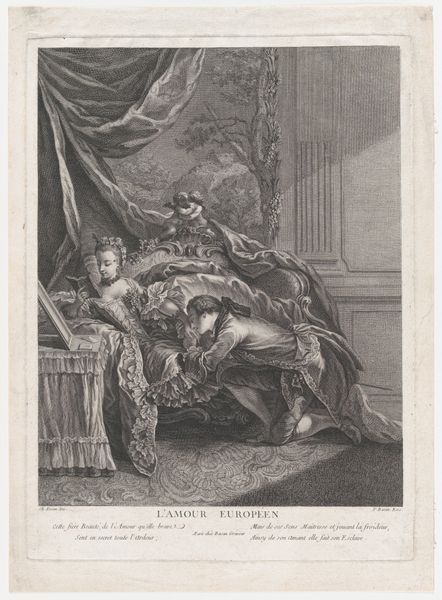
Dimensions: height 626 mm, width 457 mm
Copyright: Rijks Museum: Open Domain
Richard Earlom created this mezzotint print, "Bathsheba brengt Abisag bij David", sometime before his death in 1822. It's a scene rendered entirely in tones of black and white, a feat achieved through the mezzotint process. Mezzotint is an intaglio printmaking technique, meaning the image is incised into a metal plate, in this case, copper. The entire plate is roughened with a tool called a rocker to create a uniform burr, capable of holding ink. The artist then selectively smooths areas of the plate to varying degrees, creating lighter tones. Where the plate is burnished smooth, it holds no ink, resulting in pure white. Consider the labor involved in this image. The initial roughening of the plate alone would have taken many hours. Earlom masterfully manipulated the texture of the plate to create a full range of tones, building up the image from dark to light. This highly skilled practice allowed for the wide distribution of images, democratizing access to art, but often obscuring the intensive labor required for its production. Appreciating the craft embedded in this print allows us to move beyond just the image, and to recognize the material transformation at its core.
Comments
No comments
Be the first to comment and join the conversation on the ultimate creative platform.
